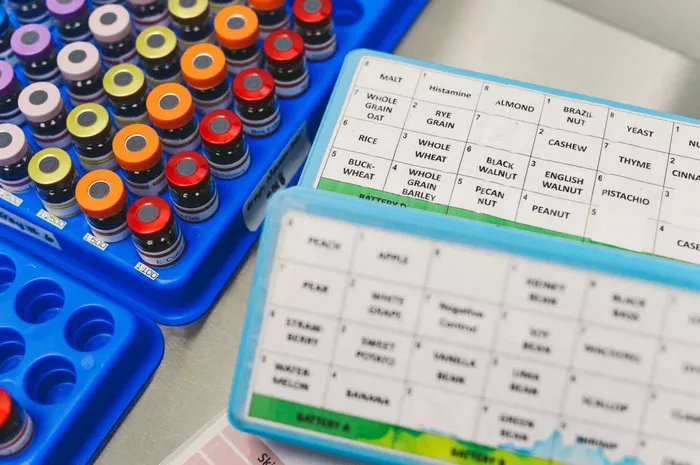Dust mites are microscopic creatures that thrive in household environments, particularly in areas where dust accumulates. These tiny pests feed on organic matter, such as dead skin cells, and are a common trigger for allergies and asthma. For individuals sensitive to dust mites, exposure can lead to a range of symptoms, including sneezing, runny or stuffy nose, itchy eyes, and respiratory issues. Fortunately, there are effective strategies to reduce dust mite populations in your home and improve indoor air quality. This article provides comprehensive guidance on how to treat and manage dust mites effectively.
Understanding Dust Mites
Dust mites, scientifically known as Dermatophagoides pteronyssinus and Dermatophagoides farinae, are found in virtually every home. They thrive in warm, humid environments and are commonly located in bedding, upholstered furniture, carpets, and curtains. Dust mites are not visible to the naked eye, but their waste products and body fragments can trigger allergic reactions in sensitive individuals.
Why Dust Mites Are a Problem
Allergic Reactions: Dust mite allergens can cause sneezing, coughing, asthma attacks, and other allergic symptoms. For individuals with asthma, exposure can worsen their condition.
Prevalence: Dust mites are prevalent in many households, making them a common indoor allergen. They can reproduce rapidly in favorable conditions, leading to significant populations if not managed properly.
Steps to Treat Dust Mites in Your Home
1. Regular Cleaning and Dusting
One of the most effective ways to reduce dust mite populations is through regular cleaning.
Vacuuming: Use a vacuum cleaner equipped with a HEPA filter to trap dust mites and their allergens. Vacuum carpets, rugs, and upholstered furniture at least once a week. Consider using a vacuum with a sealed system to prevent allergens from escaping back into the air.
Dusting: Use damp cloths or microfiber dusters to wipe surfaces. This prevents dust from becoming airborne and settling elsewhere. Focus on shelves, baseboards, and other surfaces where dust accumulates.
2. Bedding Management
Bedding is a prime location for dust mites due to the presence of dead skin cells and warmth.
Wash Bedding Regularly: Wash sheets, pillowcases, and mattress covers in hot water (at least 130°F or 54°C) weekly to kill dust mites. Ensure that items are completely dried in a hot dryer to eliminate remaining mites.
Use Hypoallergenic Covers: Encase mattresses and pillows in dust mite-proof covers. These covers are designed to prevent dust mites from penetrating and are easily washable.
3. Control Humidity Levels
Dust mites thrive in humid environments, so controlling humidity is crucial.
Use Dehumidifiers: Keep indoor humidity levels below 50% to create an unfavorable environment for dust mites. Dehumidifiers can help reduce moisture in the air, especially in basements and bathrooms.
Ventilation: Ensure proper ventilation in your home, particularly in areas prone to moisture, such as kitchens and bathrooms. Use exhaust fans and open windows when weather permits.
4. Choose Appropriate Furnishings
The type of furnishings in your home can influence dust mite populations.
Opt for Hard Surfaces: Consider replacing carpets with hard flooring options like tile, hardwood, or laminate, which are easier to clean and do not harbor dust mites as much.
Washable Items: Choose furniture that can be easily cleaned. For example, select machine-washable curtains and removable cushion covers.
5. Reduce Clutter
Clutter provides additional surfaces for dust to accumulate and dust mites to thrive.
Organize and Declutter: Regularly declutter your home to minimize dust accumulation. Store items in closed containers rather than leaving them exposed on shelves.
Limit Decorative Items: Reduce the number of knickknacks and decorative items that can collect dust. Keep surfaces clear to facilitate easier cleaning.
6. Use Air Purifiers
Air purifiers equipped with HEPA filters can help trap airborne dust mite allergens.
Placement: Position air purifiers in bedrooms and high-traffic areas to improve air quality. Ensure the purifier is appropriately sized for the room.
Filter Maintenance: Regularly change filters according to the manufacturer’s recommendations to maintain optimal performance.
7. Consider Professional Cleaning
If dust mite infestations persist despite your efforts, consider hiring a professional cleaning service.
Steam Cleaning: Professional steam cleaning of carpets and upholstery can help eliminate dust mites and their allergens. Steam cleaning uses high temperatures to kill mites and remove allergens from surfaces.
Consult an Allergist: If you or your family members continue to experience allergy symptoms, consult an allergist for further evaluation and management options. They may recommend additional treatments or therapies.
8. Allergen Avoidance Techniques
In addition to cleaning and environmental controls, consider allergen avoidance techniques.
Limit Outdoor Exposure: During high pollen seasons, keep windows closed and use air conditioning to filter indoor air. Change clothes after being outdoors to reduce the transfer of allergens.
Allergy Medications: Over-the-counter antihistamines or nasal corticosteroids can help manage symptoms if you are allergic to dust mites. Consult a healthcare provider for appropriate recommendations.
Conclusion
Dust mites are a common household pest that can significantly impact indoor air quality and trigger allergic reactions. However, by implementing effective strategies to treat and manage dust mites, you can create a healthier living environment. Regular cleaning, controlling humidity, choosing appropriate furnishings, and using air purifiers are key steps in reducing dust mite populations. If symptoms persist, seeking professional help may be necessary. By taking these proactive measures, you can breathe easier and enjoy a more comfortable home.
Related Topics:


